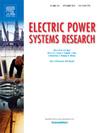Integrating Weibull analysis and KAN-ODEs for enhanced flashover prediction in contaminated composite insulators
IF 3.3
3区 工程技术
Q2 ENGINEERING, ELECTRICAL & ELECTRONIC
引用次数: 0
Abstract
This paper introduces a novel machine-learning method for predicting flashover time (FOT) in outdoor polluted polymer insulators. Due to the unpredictable nature of leakage current (LC), a probabilistic approach utilizing the Weibull distribution is employed to assess insulation failure. Analyzing Weibull coefficients establishes a critical condition for flashover prediction, informed by LC behavior and time-frequency indicators derived from Wavelet and Fourier transforms. After estimating the probabilities of insulation failure through the Weibull model, an artificial intelligence (AI) algorithm based on Kolmogorov-Arnold Network Ordinary Differential Equations (KAN![]() ODEs) has been developed. This algorithm is significantly efficient in the dynamic modeling of the LC behavior and flashover prediction. By combining these two concepts, the flashover of the insulator was predicted using a new machine-learning technique based on the probabilistic neural network (PNN). The probability section is Weibull analysis, and the predictive section is KAN
ODEs) has been developed. This algorithm is significantly efficient in the dynamic modeling of the LC behavior and flashover prediction. By combining these two concepts, the flashover of the insulator was predicted using a new machine-learning technique based on the probabilistic neural network (PNN). The probability section is Weibull analysis, and the predictive section is KAN![]() ODE. Various insulator types and aging conditions were tested to validate the model, considering factors like wetting rate and pollution intensity. The results demonstrate a strong correlation between the predicted and actual outcomes, indicating that the proposed approach can be an effective online monitoring tool to prevent pollution-related flashovers in outdoor insulators.
ODE. Various insulator types and aging conditions were tested to validate the model, considering factors like wetting rate and pollution intensity. The results demonstrate a strong correlation between the predicted and actual outcomes, indicating that the proposed approach can be an effective online monitoring tool to prevent pollution-related flashovers in outdoor insulators.
整合 Weibull 分析和 KAN-ODE 增强污染复合绝缘子的闪络预测
本文章由计算机程序翻译,如有差异,请以英文原文为准。
求助全文
约1分钟内获得全文
求助全文
来源期刊

Electric Power Systems Research
工程技术-工程:电子与电气
CiteScore
7.50
自引率
17.90%
发文量
963
审稿时长
3.8 months
期刊介绍:
Electric Power Systems Research is an international medium for the publication of original papers concerned with the generation, transmission, distribution and utilization of electrical energy. The journal aims at presenting important results of work in this field, whether in the form of applied research, development of new procedures or components, orginal application of existing knowledge or new designapproaches. The scope of Electric Power Systems Research is broad, encompassing all aspects of electric power systems. The following list of topics is not intended to be exhaustive, but rather to indicate topics that fall within the journal purview.
• Generation techniques ranging from advances in conventional electromechanical methods, through nuclear power generation, to renewable energy generation.
• Transmission, spanning the broad area from UHV (ac and dc) to network operation and protection, line routing and design.
• Substation work: equipment design, protection and control systems.
• Distribution techniques, equipment development, and smart grids.
• The utilization area from energy efficiency to distributed load levelling techniques.
• Systems studies including control techniques, planning, optimization methods, stability, security assessment and insulation coordination.
 求助内容:
求助内容: 应助结果提醒方式:
应助结果提醒方式:


